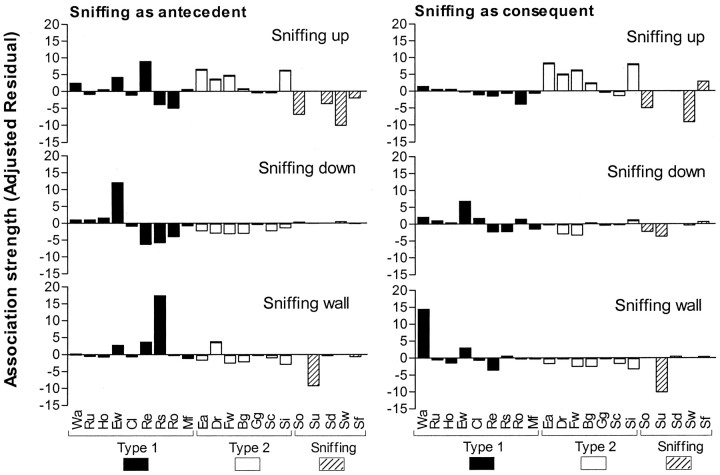Fig. 1.
Behavioral transitions with sniffing behaviors. The figure shows the association strength (as adjusted residuals) of sniffing up, sniffing down, and sniffing wall with other types of behavior. A positive-adjusted residual reflects a higher number of transitions between two behaviors than can be expected on the basis of the occurrence of the two behaviors; a negative-adjusted residual means a lower number of transitions between two behaviors than can be expected on the basis of the occurrence of the two behaviors. The larger the adjusted residual, the stronger the association between the two behaviors is. Adjusted residuals are shown for transitions with sniffing behaviors as first act, with the behaviors on thex-axis representing following behaviors (Sniffing as antecedent, left), and for transitions with sniffing behaviors as second act, with the behaviors on thex-axis representing preceding behaviors (Sniffing as consequent, right). Wa, Walking; Ru, running; Ho, hopping;Ew, exploratory walking; Cl, climbing;Re, rearing; Rs, rearing supported;Ro, rearing object; Mf, manipulating food; Ea, eating; Dr, drinking;Fw, face washing; Bg, body grooming;Gg, genital grooming; Sc, scratching;Si, sitting; So, sniffing object;Su, sniffing up; SD, sniffing down;Sw, sniffing wall; Sf, sniffing food.

